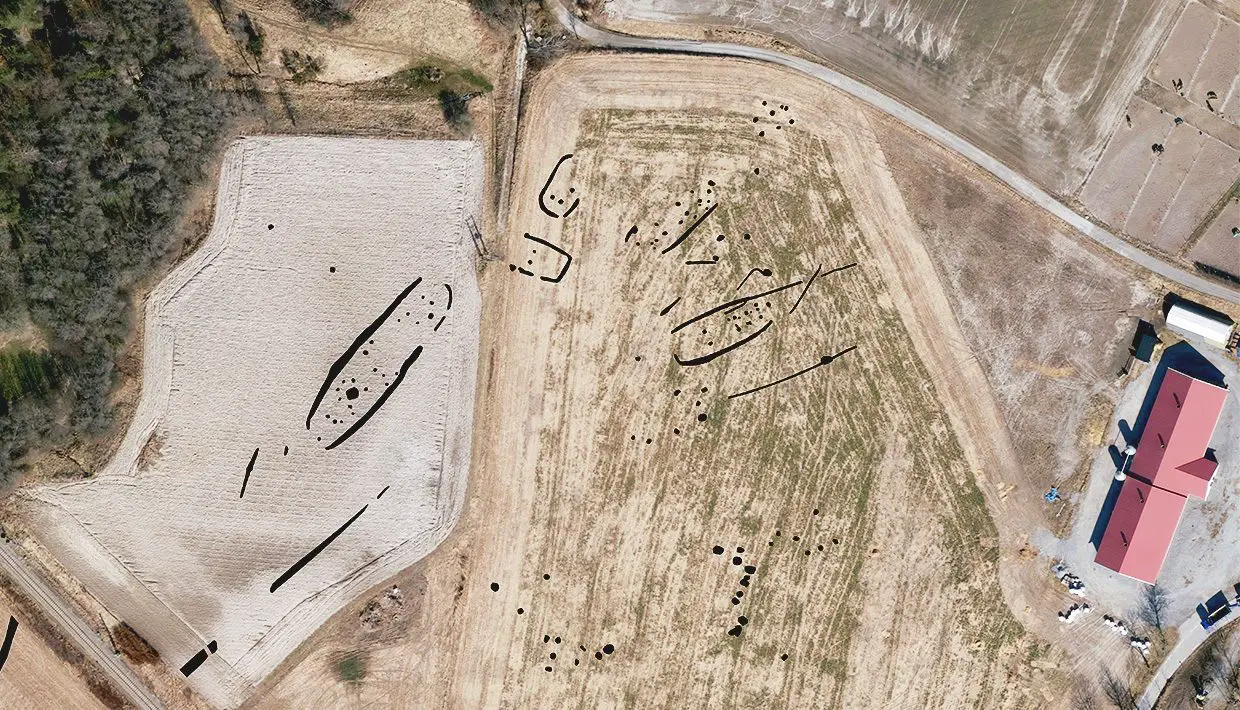Archaeologists conducting studies using ground penetrating radar (GPR) have discovered a large Nordic Iron-Age longhouse near the Viking Gjellestad longship in Norway.
The site of Gjellestad is rich in archaeological discoveries that date back to around 1500 BC. The landscape is dominated by the monumental Jellhaugen Mound, but previous surveys have identified burial mounds, along with the Viking Gjellestad ship first excavated in 2020.
The latest study was initiated by the Norwegian Institute for Cultural Heritage Research (NIKU), where they applied GPR to an area of 98.8 acres that revealed several typical Iron Age longhouses, with the most notable discovery being a 60 metre long by 15 metre wide longhouse, one of the largest ever found in all of Scandinavia.
“We are yet to know the age or what function the buildings had. Future Archaeological excavations will help us to answer this” says Sigrid Mannsåker Gundersen, archaeologist with Viken county.
The team also identified four other buildings that are approximately 15-30 metres in length and up to 13 metres wide, with evidence of several ploughed-out burial mounds.
The GPS surveys are the first part of the ‘Viking Nativity: Gjellestad Across Boarders’ researcher project, where archaeologists, historians and Viking age specialists examine the development of Gjellestad during the Nordic Iron Age.
Lars Gustavsen from NIKU said: “Finding these longhouses confirms that Gjellestad was a major centre in the late Iron Age. Our hope is to understand the relationship between the ship, the buildings and the rise of Gjellestad”.
Header Image Credit : Arild L. Teigen/VIken fylkeskommune





